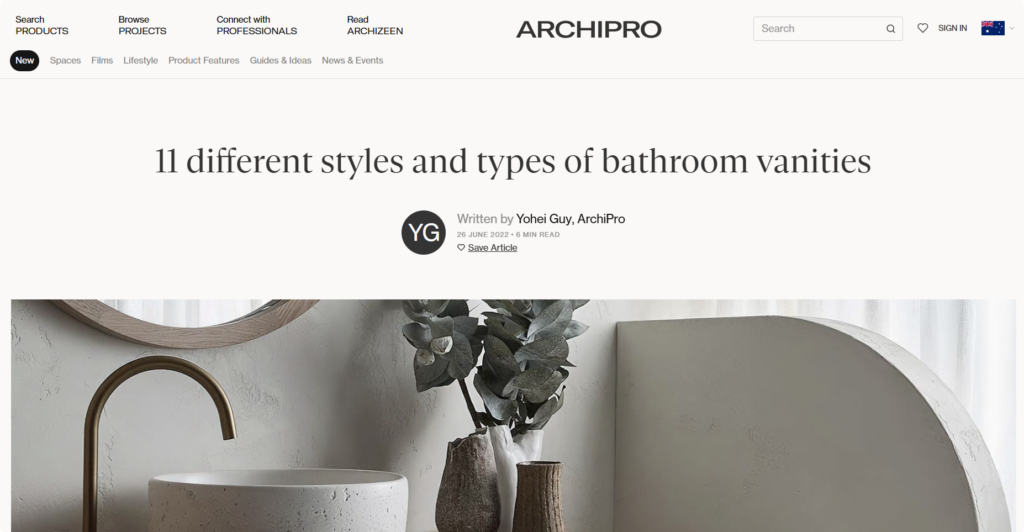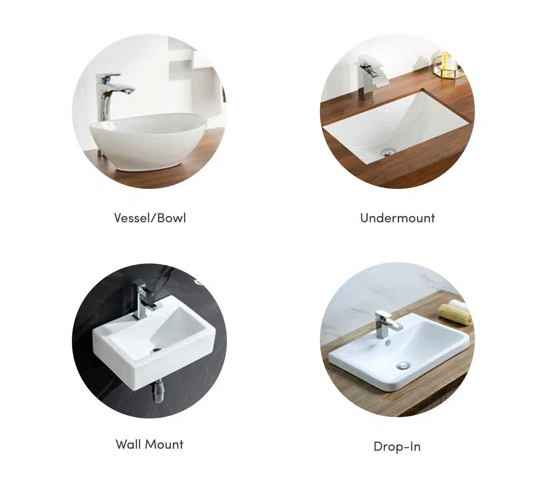When shopping for bathroom vanities, one of the most common questions that arise is whether or not a bathroom vanity includes a sink. This question, although seemingly simple, can lead to confusion if the terms and product details are not fully understood. In this article, we will delve into the nuances of bathroom vanities, explaining what is typically included with these pieces of bathroom furniture, the various types of vanities, and how to choose the right vanity for your needs. By the end, you’ll have a clear understanding of what to expect when purchasing a bathroom vanity.
What is a Bathroom Vanity?
A bathroom vanity is a piece of furniture that typically combines storage and a countertop in one unit, often positioned beneath a bathroom sink. Vanities are designed to hold sinks and provide storage for toiletries, towels, and other bathroom essentials. They come in various sizes, styles, and configurations, making it easy to find one that fits your bathroom’s design and functional needs.
However, the confusion often arises when it comes to understanding whether or not a sink is included with the vanity. While some vanities come with a built-in sink, others may require you to purchase a sink separately.
Types of Bathroom Vanities
There are several types of bathroom vanities to consider, each offering different features and levels of customization. Below are the most common types:

- Freestanding Vanities
These are standalone units that are not attached to the wall. They often include a sink, although there are some models that may require you to add your own. - Wall-Mounted Vanities
Also known as floating vanities, these are mounted directly to the wall, leaving the floor underneath exposed. Most wall-mounted vanities do not come with a sink, though some modern designs feature integrated sink options. - Double Vanities
These are larger vanities designed for two sinks, typically seen in master bathrooms. Double vanities can either come with pre-installed sinks or require you to purchase them separately, depending on the manufacturer. - Custom Vanities
Custom vanities are made to order, offering flexibility in terms of size, style, and features. Depending on your needs, a custom vanity may or may not include a sink as part of the design.
Does a Bathroom Vanity Include a Sink?
Now that we’ve discussed the different types of bathroom vanities, it’s time to answer the question directly: Does a bathroom vanity include a sink?
The answer depends on the specific vanity you are purchasing. Let’s break down the different scenarios:
| Type of Vanity | Sink Included? | Notes |
|---|---|---|
| Freestanding Vanity | Often Yes, but check product details | Many freestanding vanities include a sink, but some models are sold without one. |
| Wall-Mounted Vanity | Usually No | Most wall-mounted vanities do not come with a sink, although some designs are integrated. |
| Double Vanity | Often Yes, but may vary | Double vanities may come with pre-installed sinks, but not always. Verify the product description. |
| Custom Vanity | No (usually) | Custom vanities typically require you to select and install your own sink separately. |
As you can see from the table, it’s essential to carefully read the product description when purchasing a bathroom vanity. While many vanities come with a sink, not all do. When buying a vanity, it’s always a good idea to confirm whether or not the sink is included, especially if you are ordering online.
Common Bathroom Vanity Sink Types
If you find that your vanity does not come with a sink, you’ll need to choose one that fits your vanity style and functional needs. The following are some of the most common types of bathroom sinks:

- Undermount Sinks
These sinks are installed beneath the countertop, providing a sleek and modern look. They are common in freestanding and custom vanities. - Vessel Sinks
A vessel sink is a bowl-like sink that sits on top of the vanity countertop. It provides a more contemporary, stylish appearance but may not work with all vanity types. - Drop-In Sinks
Drop-in sinks are designed to fit into a pre-cut hole in the vanity countertop, with the edges resting on the surface. - Integrated Sinks
Some vanities, especially wall-mounted models, feature an integrated sink where the vanity and sink are one continuous piece. This option is popular for minimalistic or modern bathroom designs.
Considerations When Choosing a Bathroom Vanity
When deciding on the right bathroom vanity for your space, several factors should be considered:
- Size of Your Bathroom
The size of your bathroom will help determine the type and size of the vanity you need. For smaller bathrooms, a wall-mounted or compact freestanding vanity may be the best option, while larger bathrooms can accommodate double vanities or more elaborate setups. - Storage Needs
Consider how much storage space you need. If you have limited storage in your bathroom, choose a vanity with drawers or cabinets for storing towels, toiletries, and other essentials. - Style Preferences
Choose a vanity that complements the overall design and aesthetic of your bathroom. Whether you prefer a modern, traditional, or rustic look, there is a vanity style that will suit your tastes. - Material and Durability
The material of your vanity should be durable and water-resistant, as it will be exposed to moisture. Wood, MDF, and metal are common materials used in bathroom vanities, but the finish and quality can vary greatly. - Sink Compatibility
If you are purchasing a vanity without a sink, make sure the sink you choose fits the vanity’s dimensions and style. Also, consider the installation process for the sink—some sinks require professional installation, while others can be installed by a DIYer.
How to Install a Bathroom Vanity and Sink
Installing a bathroom vanity and sink can be a DIY project, but it’s important to ensure proper measurements and installation techniques to avoid plumbing issues. Here are the general steps involved in installing a bathroom vanity and sink:
- Measure the Space
Measure the area where you plan to install the vanity. Ensure that the vanity fits well in the designated space and that there is enough room for the sink. - Turn Off the Water Supply
Before beginning installation, turn off the water supply to the bathroom to prevent any leaks or accidents. - Install the Vanity Base
For a freestanding or wall-mounted vanity, secure the vanity to the wall (if necessary) or place it in the desired location. - Install the Sink
Follow the manufacturer’s instructions for installing the sink. Whether it’s an undermount, drop-in, or vessel sink, ensure that it is properly secured and aligned with the vanity. - Connect Plumbing
Once the sink is installed, connect the plumbing, including the faucet and drain, ensuring there are no leaks. - Seal the Edges
Apply a silicone sealant around the sink and countertop edges to prevent water from seeping into the vanity. - Test for Leaks
Turn the water supply back on and check for any leaks or issues with the installation.
Conclusion
When purchasing a bathroom vanity, it’s essential to understand that not all vanities come with a sink. Freestanding and double vanities often include a sink, while wall-mounted and custom vanities may not. Be sure to check the product details and choose a sink that fits both the aesthetic and functional needs of your bathroom.
At Danube Toilet, we are a leading manufacturer of bathroom and sanitary ware based in China. We specialize in offering ODM and OEM services, providing large-scale custom orders for global retailers and small-batch orders for boutique buyers. Whether you are a distributor, designer, or business buyer, we are committed to delivering high-quality products tailored to your needs. Our team of experts ensures that every product meets the highest standards of durability and design, making us the trusted partner for bathroom solutions worldwide.
